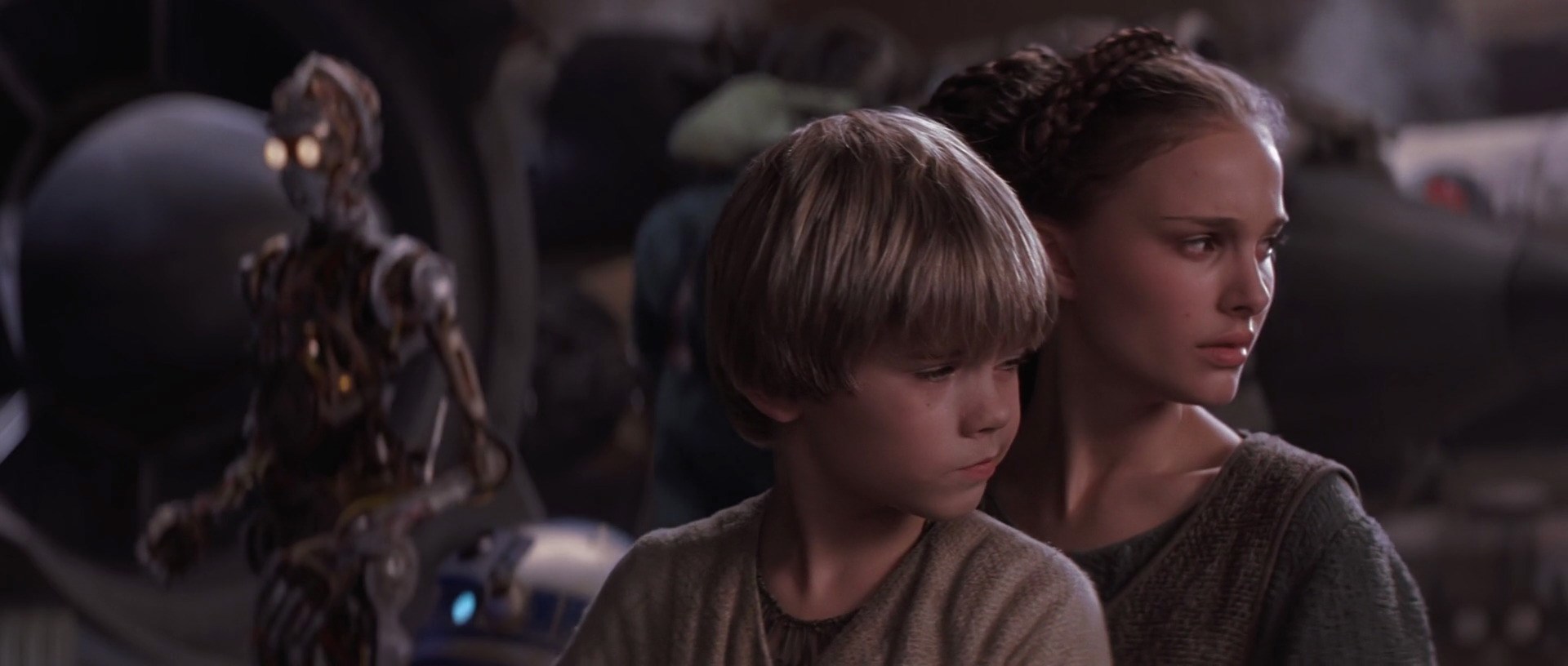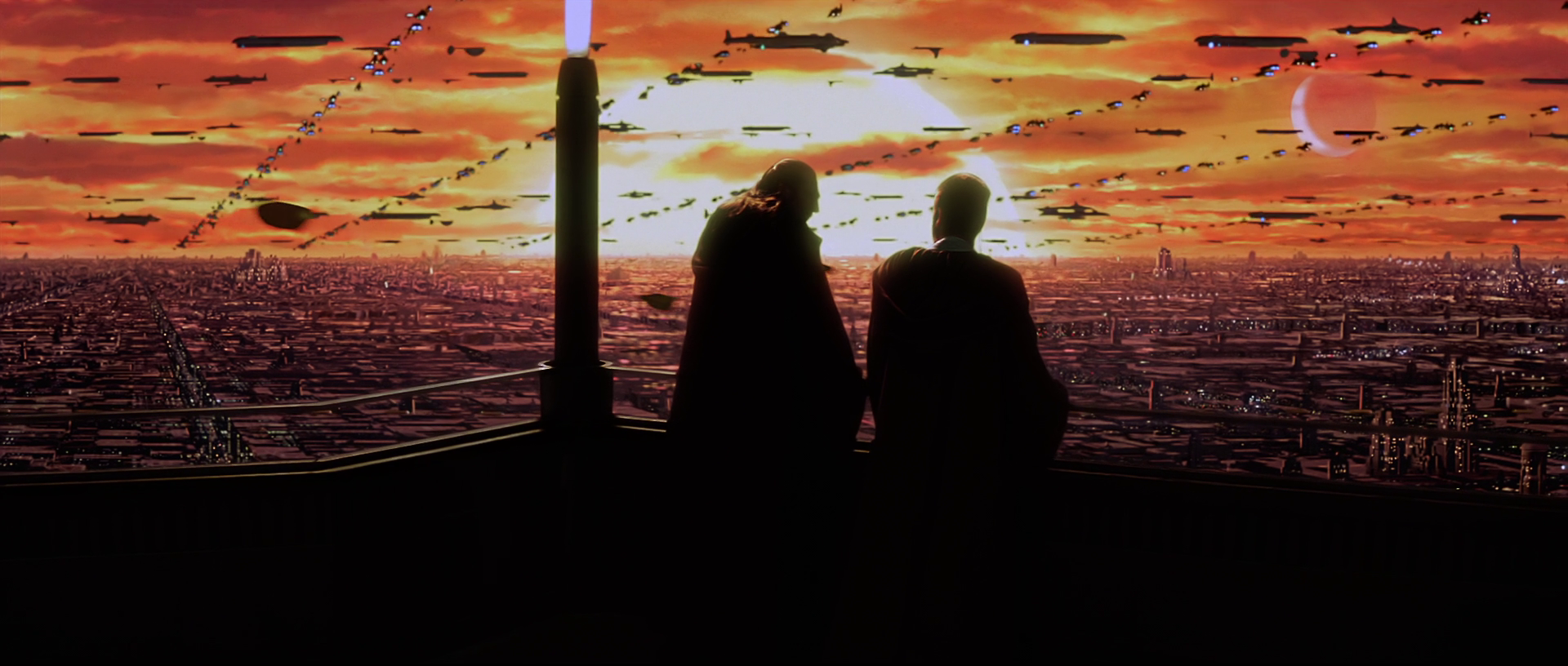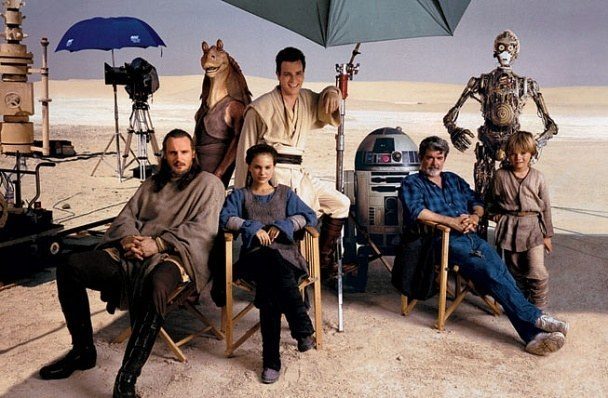For years, it was a commonly accepted truth in Star Wars fandom that the prequel trilogy was unequivocally a blight on the franchise and perhaps even the worst set of movies unleashed on mankind. In fact, I’m sure in many areas of the fandom that sentiment still holds true. Liking the prequels was not something one admitted to, and especially not The Phantom Menace. A Star Wars movie about trade disputes? Ridiculous.
However as the years have gone on and social media has become a much bigger force in fandom, that sentiment is slowly changing. Far from being universally derided, the prequels have quite a large and devoted fanbase and the era itself is enjoying something of a renaissance these days through books, comics, and television. As we approach the twenty-year mark of the start of this trilogy, it’s worth looking back on the prequels and acknowledging that there’s quite a lot to enjoy…and quite a lot done well.
The Phantom Menace in particular has received the brunt of anti-prequel sentiment, and unfairly so. Not only is it a genuinely fun movie on its own, but it’s vital to the overall Star Wars saga and to the Skywalker mythos. It introduced key characters who are still important to the story years later (hello Darth Maul), brought depth to the franchise as we knew it then, and added key ideas, themes, and concepts that we now take for granted. While the prequels as a whole have experienced a resurgence in public favor lately, so too has TPM finally been getting the respect and appreciation it deserves.
And so in honor of its twentieth anniversary it’s time to take a look back at The Phantom Menace and see what makes it so great. In both its characters and its story, it’s worth appreciating all that it adds to the Star Wars universe.
 For one, there’s Obi-Wan Kenobi. He’s a far cry from the wise mentor figure portrayed by Sir Alec Guiness; instead he’s a young man on the cusp of adulthood, relatably unsure of himself and his abilities. He’s still a Padawan, trying to figure out what kind of Jedi he wants to be. Instead, we have the noble Qui-Gon Jinn in the role of mentor, a somewhat rogue Jedi who nonetheless sees to the heart of what being a Jedi is about. And between these two and their relationship with the Jedi Council we actually get to see what the Jedi Order was like in their prime and get a greater sense of their philosophy and teachings. Up until that point the only Jedi we really knew well were Luke, Obi-Wan, and Yoda, who were either barely trained or living in exile. But now we finally get a sense of what these mythic figures were like in their heyday.
For one, there’s Obi-Wan Kenobi. He’s a far cry from the wise mentor figure portrayed by Sir Alec Guiness; instead he’s a young man on the cusp of adulthood, relatably unsure of himself and his abilities. He’s still a Padawan, trying to figure out what kind of Jedi he wants to be. Instead, we have the noble Qui-Gon Jinn in the role of mentor, a somewhat rogue Jedi who nonetheless sees to the heart of what being a Jedi is about. And between these two and their relationship with the Jedi Council we actually get to see what the Jedi Order was like in their prime and get a greater sense of their philosophy and teachings. Up until that point the only Jedi we really knew well were Luke, Obi-Wan, and Yoda, who were either barely trained or living in exile. But now we finally get a sense of what these mythic figures were like in their heyday.
And of course there’s no talking about TPM without talking about Padmé. I’ve mentioned a few times before that TPM is really her movie, but it bears repeating: Lucas started his new Star Wars trilogy by focusing on the fight of a teenage girl to save her people. Not only was she unabashedly feminine with her expansive collection of ornate gowns but she was smart, with a spine of steel, and fought just as well with her words as she did a blaster. She not only takes down the powerful Trade Federation, she completely disrupts the plans of a cunning and calculated Sith Lord. All this at fourteen years old! And yet at the same time she was still completely a teenage girl. She sulks when she doesn’t get her way, she makes friends with funny little boys in junk shops, and she has that idealistic belief in her own invincibility that comes with youth. And she was surrounded by a bunch of badass handmaidens who were every bit as handy in a crisis as she was. It’s a shame it took until 2019 to get a story that actually delves into the relationship, but it’s still the first time in the franchise we get to see a woman surrounded almost entirely by other women.

Finally, there’s Anakin Skywalker. TPM introduces the biggest villain of the entire franchise as a small, compassionate, loving, and enslaved boy and this is, perhaps, the greatest choice the movie makes. It would have been so easy to introduce Anakin as an already brooding kid, beaten down by the terrible lot he’d been given in life. As the future Darth Vader, it would’ve been easy to show he already had darkness in him, to show the seeds of his future fall. But that’s the easy way out and so instead Lucas chooses to introduce him as a child full of hope and wonder and a ceaseless need to help others. Introducing Anakin as a moody teenager adds very little to his character journey; introducing him as a cheerful kid adds incredible depth. It not only enhances the tragedy of his eventual fall to the dark side, but exemplifies the biggest theme in Star Wars: the potential to do good is in each and every person. It’s your choices that make you who you are, not your circumstances.
Also worthy of recognition is the setting and overall aesthetic of TPM. The movie exploded the worldbuilding of Star Wars far beyond what we’d seen in the franchise thus far. No longer were we on nearly barren, remote planets that only exist as hidden rebel outposts; here we actually got to see what types of people inhabited the galaxy at large. From the classical, Spanish-influenced planet Naboo, to the glittering, artificial Coruscant, and even the Roman panem et circenses of Tatooine, TPM brought an explosion of life and color into the galaxy that simply hadn’t been present in the original trilogy. There were sleek new ships, colorful new aliens, and richly detailed costumes and it was an absolute breath of fresh air compared to the more utilitarian aesthetic of the original trilogy. By necessity those movies had to focus on the Rebellion and their fight, but now we had the chance to focus on a galaxy that was (nominally) at peace and to take the time to see why it’s worth fighting for in the first place.
And ultimately that’s in TPM’s favor. It sets the tone of the prequels as being wholly different and its own thing. If the original trilogy is the classic heroic monomyth, the prequel trilogy is a classic Shakespearean tragedy. If the original trilogy is a war story about unlikely underdogs, the prequels are the Belle Epoque, a Gilded Age masking the corruption and societal decay that will eventually be its downfall. TPM (and the prequel trilogy in general) gets mocked for focusing too much on politics, but that is the entire point! Rarely are things so cut-and-dry as an evil bad guy swooping in to try and kill everyone. Palpatine didn’t show up out of the blue to execute a hostile takeover; he sowed discord in the shadows as Sidious and worked to keep the Republic stagnant as Palpatine, and thus made himself dictator by killing the Republic with a thousand tiny cuts.

It’s not a coincidence that we go from the poor, enslaved underclass of Tatooine, whose main entertainment is betting on the deadly sport of podracing, to the flashy beautiful planet of Coruscant, where we are immediately greeted by an ineffectual and uncaring senate and a Jedi Council who seem more occupied with meditating in their literal ivory tower than going out and spreading the light. Fascism does not arrive fully formed in a black cape. It starts small, by ignoring small injustices and letting inequalities grow because they’re happening far away and not to you. The prequel trilogy was not about rehashing the fight between good and evil, but showing how evil can grow in the shadow of good if we’re not careful, and TPM sets that tone right out of the gate.
Is TPM a perfect movie? No, and it certainly could have done better in many respects, not the least of which is its unfortunate portrayal of Jar Jar, the Nemoidians, and Watto, all of whom border uncomfortably close to racist stereotypes (and while I truly believe it’s unintentional, it still hurts all the same). But it deserves far less mockery than it gets and I would go so far as to argue that it’s the best film of the prequel trilogy, or at least on par with Revenge of the Sith. It wonderfully recontextualizes much of what we take for granted in the original trilogy, most notably Darth Vader, and adds so many bright new themes, concepts, and ideas to the franchise (seriously, where would we be without Darth Maul?). It blew open what we thought Star Wars looked like and added incredible richness and depth to the franchise, and for that it will always be worthy of celebrating. And it’s also just a lot of fun.


Awesome to see TPM get love. It’s not what any of us expected, but it’s still a heck of a Star Wars story!